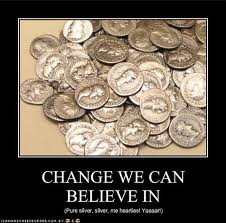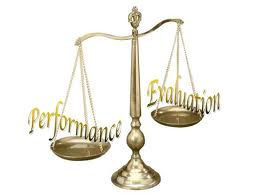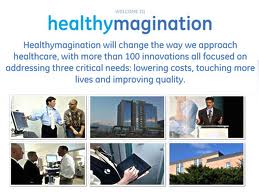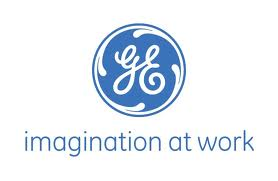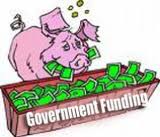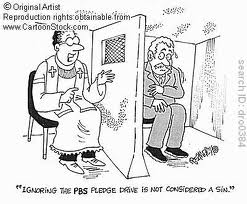 We all learned as kids in school that Sir Isaac Newton stipulated in his Third Law of Motion that for every action there is an equal and opposite reaction. Thanks to Newton, I was not surprised earlier this week by anything I read in The State of Grantseeking Fall 2011 report conducted by GrantStation and PhilanTech. This excerpt kind of sums up the entire report:
We all learned as kids in school that Sir Isaac Newton stipulated in his Third Law of Motion that for every action there is an equal and opposite reaction. Thanks to Newton, I was not surprised earlier this week by anything I read in The State of Grantseeking Fall 2011 report conducted by GrantStation and PhilanTech. This excerpt kind of sums up the entire report:
“While nonprofits remain optimistic about their ability to raise funds and deliver services,” said Dahna Goldstein, Founder of PhilanTech, “many organizations – particularly smaller organizations – are applying for more grants but receiving smaller grants.”
Surely, none of you are surprised by this. Right? Anyone who thinks about it for a moment will see the following:
- Government funds have dried up in “The New Norm” (aka this new economic paradigm that we’re living in).
- Government debt levels mean that the “golden days of government funding” are probably over for a long time.
- The difference between writing a government grant and a foundation grant is almost non-existent.
- Non-profits are shifting their attention and efforts to foundation grant opportunities.
- The pool of money available from foundations doesn’t magically expand because interest increases. So, you have more proposals chasing the same pool of funding and there are only two possible outcomes (unless the pool of funding expands):
- you either get more rejected proposals, or
- you get more funded proposals at smaller gift levels
 While some people are asking questions like “how can we write better grant proposals and become more competitive,” I think these types of questions all miss the mark. I think the better question is:
While some people are asking questions like “how can we write better grant proposals and become more competitive,” I think these types of questions all miss the mark. I think the better question is:
“Why the heck aren’t non-profit organizations overhauling their resource development plans to better position themselves to secure more sustainable funding from individuals (e.g. people like you and me) rather than from institutions (e.g. corporations, foundations and government)?”
After all, when you look at the charitable giving statistics for the as long as they’ve been published, you clearly see that the vast sum of all charitable giving come from individuals. When I scratch my head and ponder this question, I can only come to a few disturbing conclusions:
- Asking people for money is scary, and it is hard to get board members and volunteers to move beyond this paralyzing fear.
- Many non-profit professionals (e.g. CEOs and fundraising staff) aren’t practicing the 9-keys of volunteer engagement and as a result there are many disengaged volunteers and board members sitting around our board room tables. So, mobilizing our “people resources” in the name of individual giving seems like a non-starter to many non-profit professionals.
- It is always easier to travel the path of least resistance. This was what Robert Frost was saying in his famous poem “The Road Not Taken”. In other words, it is far easier to shift your efforts from writing proposals for government agencies to writing proposals for foundations.
 Here is my word of caution to the entire non-profit sector . . . It is important to remember that foundations don’t give away magic money, and they don’t typically spend down their fund balance. Their year-to-year contributions are based upon their “investment income,” which usually means that when the stock market goes down so does the pool of available dollars from foundations.
Here is my word of caution to the entire non-profit sector . . . It is important to remember that foundations don’t give away magic money, and they don’t typically spend down their fund balance. Their year-to-year contributions are based upon their “investment income,” which usually means that when the stock market goes down so does the pool of available dollars from foundations.
I would draw a comparison to Isaac Newton’s first law of motion that most people have come to know as “what goes up must come down,” but I won’t because I just know there are argumentative investment professionals reading this blog who don’t think this law applies to the stock market. However, ask yourself this question: “Is it possible that the stock market in this ‘New Norm’ might experience adjustments and contractions if the economy doesn’t start dramatically improving soon?”
My point is simple . . . Read The State of Grantseeking Fall 2011 report . . . come to grips with the realities of “The New Norm” . . . engage your volunteers using the resource development planning process . . . and start asking tough questions around “What if?” and “How do we re-align our fundraising efforts, adjust to The New Norm and start asking individual donors for their support?”
There are many different individual giving models out there. Please tune in next week and we’ll talk about a few of those models.
Has your non-profit organization experienced some of the same things that the 900 respondents reflected in the grantseeker report? If so, what is it specifically? If not, what are you experiencing and what do you think accounts for your success against this industry trend?
Please use the comment box below to weigh-in.
Here’s to your health!
Erik Anderson
Founder & President, The Healthy Non-Profit LLC
www.thehealthynonprofit.com
erik@thehealthynonprofit.com
http://twitter.com/#!/eanderson847
http://www.facebook.com/eanderson847
http://www.linkedin.com/in/erikanderson847

